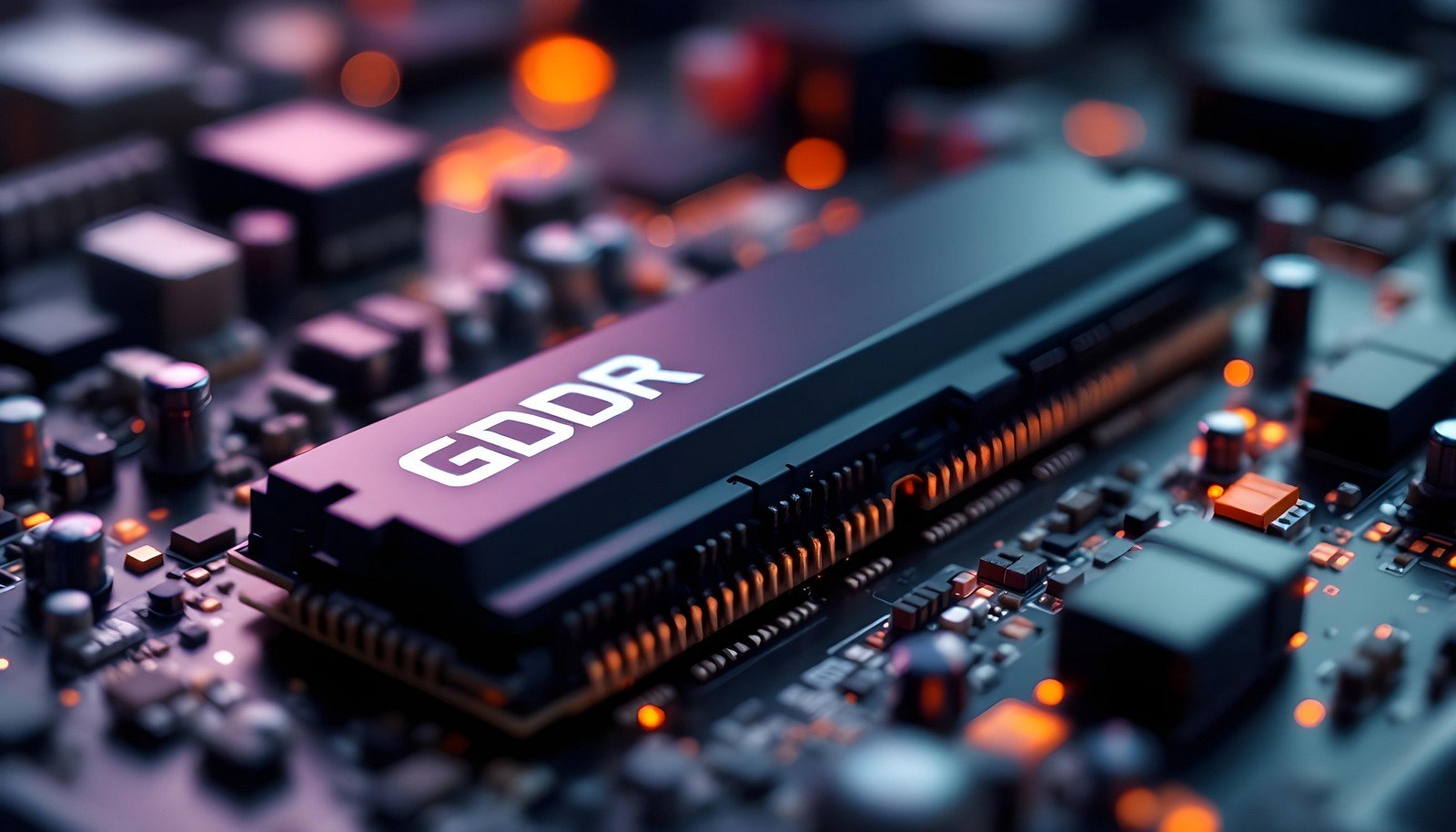GDDR Memory

Quick Navigation:
- GDDR Memory Definition
- GDDR Memory Explained Easy
- GDDR Memory Origin
- GDDR Memory Etymology
- GDDR Memory Usage Trends
- GDDR Memory Usage
- GDDR Memory Examples in Context
- GDDR Memory FAQ
- GDDR Memory Related Words
GDDR Memory Definition
Graphics Double Data Rate (GDDR) memory is a specialized type of high-performance memory designed for graphics processing units (GPUs). It offers high bandwidth and low latency, which are critical for rendering complex graphics, 3D environments, and gaming. GDDR memory evolves in generations (e.g., GDDR5, GDDR6, GDDR6X), with each generation bringing higher speeds and improved power efficiency. Its parallel architecture enables quick data transfer, making it a cornerstone of modern computing in areas like gaming, video editing, and AI.
GDDR Memory Explained Easy
Think of GDDR memory like a super-fast notebook that a computer's "artist" (the GPU) uses to draw pictures, create animations, or design games. It allows the GPU to get its "paint and brushes" quickly so it can create beautiful images without slowing down.
GDDR Memory Origin
GDDR memory was developed to meet the increasing demands of computer graphics as GPUs became more powerful. Initially, SDRAM was used for graphics, but as applications required higher frame rates and resolutions, GDDR memory emerged in the early 2000s as a specialized solution.
GDDR Memory Etymology
The term “GDDR” stands for "Graphics Double Data Rate," reflecting its focus on graphics applications and its ability to double the data transfer rate by transferring data on both edges of a clock cycle.
GDDR Memory Usage Trends
With the rise of gaming, virtual reality, and AI, GDDR memory has become a fundamental part of GPUs. Over the past decade, its adoption has grown as game developers, video editors, and AI researchers demand faster data throughput. The transition from GDDR5 to GDDR6 and GDDR6X showcases the industry's push for greater performance.
GDDR Memory Usage
- Formal/Technical Tagging:
- Graphics Memory
- GPU Optimization
- High-Bandwidth Memory - Typical Collocations:
- "GDDR memory bandwidth"
- "GDDR6 for gaming"
- "next-gen GDDR performance"
GDDR Memory Examples in Context
- Gamers often seek GPUs with GDDR6 memory for high-resolution, lag-free gaming.
- AI researchers use GPUs with GDDR memory for deep learning and complex computations.
- Video editors rely on GDDR memory to render 4K or 8K video footage without stuttering.
GDDR Memory FAQ
- What is GDDR memory used for?
GDDR memory is used in GPUs for rendering graphics, gaming, and AI applications. - How is GDDR memory different from DDR memory?
GDDR memory is optimized for graphics performance, with higher bandwidth, while DDR is used for general-purpose computer RAM. - What is the latest GDDR memory?
GDDR6X is one of the latest versions, offering higher speeds and improved efficiency. - How does GDDR memory affect gaming?
Faster GDDR memory reduces lag and improves frame rates, enabling smoother gameplay. - Is GDDR memory only for GPUs?
Yes, it is specifically designed for graphics-related applications in GPUs. - What is the bandwidth of GDDR memory?
Bandwidth varies by generation; for instance, GDDR6 offers up to 768 GB/s in high-end configurations. - Why does GDDR memory matter in AI?
Its high bandwidth enables GPUs to process large datasets required for AI and deep learning efficiently. - Is GDDR memory energy-efficient?
Newer generations, like GDDR6, are designed with improved energy efficiency compared to older versions. - How does GDDR compare to HBM (High-Bandwidth Memory)?
HBM offers higher bandwidth but is more expensive and used in specialized applications, while GDDR is widely adopted. - Can GDDR memory be upgraded?
No, GDDR memory is soldered to the GPU and cannot be upgraded separately.
GDDR Memory Related Words
- Categories/Topics:
- Graphics Processing Units
- High-Performance Computing
- Gaming Technology
Did you know?
The development of GDDR memory has been instrumental in enabling realistic game graphics. For example, GDDR6X memory was crucial in powering the ray-tracing capabilities of the latest NVIDIA GPUs, making light and shadows in games look almost like real life.
PicDictionary.com is an online dictionary in pictures. If you have questions or suggestions, please reach out to us on WhatsApp or Twitter.Authors | Arjun Vishnu | @ArjunAndVishnu

I am Vishnu. I like AI, Linux, Single Board Computers, and Cloud Computing. I create the web & video content, and I also write for popular websites.
My younger brother, Arjun handles image & video editing. Together, we run a YouTube Channel that's focused on reviewing gadgets and explaining technology.



Comments powered by CComment